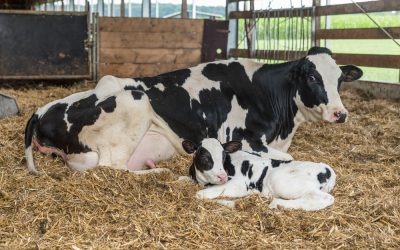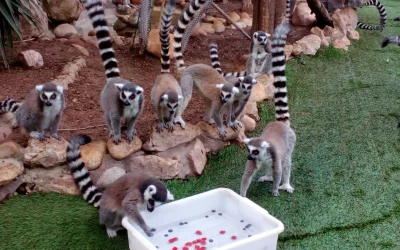X.Manteca, M.Salas
The concept of “animal welfare” includes the physical health, the emotional state and the behaviour of the animals. The welfare of animals kept in zoos and aquariums is important for ethical reasons. Also, ensuring the best possible standards of animal welfare is a must for modern zoos in order to fulfil their educational and conservation roles.
First and foremost, the welfare of animals kept in zoos and aquariums is important for ethical reasons. Also, ensuring the best possible standards of animal welfare is a must for modern zoos in order to fulfill their educational and conservation roles.
The importance of animal welfare for modern zoos has been recognized, among others, by the World Association of Zoos and Aquariums, which has a Code of Ethics and Animal Welfare. This code includes the principle that all actions carried out on an animal should have as their ultimate goal the conservation of the species without compromising the animal’s welfare.
ANIMAL WELFARE INCLUDES HEALTH AND THE EMOTIONAL STATE
Although there are many definitions of animal welfare, most authors agree that the term “animal welfare” includes two elements: the physical health of the animals and their emotional state. The first element, physical health, includes the absence of disease and injury, adequate feeding, and physical and thermal comfort.
The second element of welfare, emotional state, includes both the absence of negative emotions and the presence of positive ones. However, the study of positive emotions in animals is just beginning and this is why relatively less emphasis has been given to them. The main negative emotions in zoo animals are pain, fear, distress and, at least in some species, boredom.
THE ABILITY TO EXPERIENCE EMOTIONS AND SUFFERING IS NOT UNIQUE TO MAMMALS AND BIRDS
Concern for the welfare of animals is largely a result of their ability to experience emotions and therefore, to suffer. This ability requires a certain development of the nervous system, so it is not necessarily present in all animals. Although there is still some controversy on this point, most authors believe that all vertebrates have a central nervous system sufficiently developed to experience pain and other forms of suffering. This means that not only mammals and birds, but also fish, reptiles and amphibians may suffer.
As for invertebrates, cephalopods are the only group that supposedly have a central nervous system developed enough to supports the ability to suffer. However, it cannot be ruled out that in the near future scientists may add other invertebrate groups (in addition to cephalopods) to the list of animals with this ability..
BEHAVIOUR AND WELFARE
Besides thephysical health and the emotional state discussed so far, the behaviour of animals is also directly related to their welfare. First, there are some behaviour patterns that appear to be important in themselves, regardless of their functional consequences. These behaviours are sometimes called “behavioural needs”. A behavioural need is a behaviour whose motivation depends mainly on internal factors and is therefore independent of the environment in which the animal is found. Consequently, animals will have the need to perform the behaviour regardless of where they are kept.
Although the concept of behavioural needs is controversial, it is clear that failure to show some behaviours may have negative consequences for the animals. Secondly, there are behaviours that contribute to the health or to the positive emotional state of the animal.
Finally, changes in the behaviour of animals provide particularly useful information about their welfare.
IN SUMMARY, ANIMAL WELFARE IS A MULTIDIMENSIONAL CONCEPT In summary then, the concept of “animal welfare” includes the physical health, the emotional state and the behaviour of the animals (see Table 1).
The “multidimensional” nature of the concept of animal welfare is reflected in the definition proposed by the World Organisation for Animal Health (OIE): “An animal is in a satisfactory state of wellbeing when it is healthy, comfortable, well nourished, safe, able to express its innate behaviour, and if it is not suffering from unpleasant states such as pain, fear and distress”. Similarly, the well-known principle of the Five Freedoms reflects the multidimensional nature of the concept of animal welfare.
THE CONCEPT OF ANIMAL WEFARE CAN BE UNDERSTOOD AS A MEASURE OF THE ADAPTATION OF ANIMALS TO THEIR ENVIRONMENT
One of the most cited definitions of animal welfare is that of Broom (1986): “The welfare of an individual is its state as regards its attempts to cope with its environment” Since this definition may initially be somewhat complex, it is worth a careful analysis. A key element in the definition is that welfare is related to the ability of the animal to cope with any difficulties created by its environment. Theoretically, an animal could be in three different situations. Suppose, first, that the environment is particularly difficult for the animal and it cannot successfully cope with the difficulties it is faced with. One would then expect the animal to die or suffer multifactorial diseases that depend in part on environmental conditions. So, when the environment is particularly difficult, mortality and incidence or prevalence of multifactorial diseases are indicators of poor welfare.
A second possibility is that the environment is not so difficult for the animal, so that it can eventually adapt to it, although its difficulty in adaptating and the adaptation process itself has a cost to the animal. This cost is the result of the possible negative consequences of stress responses and of the behaviour changes the animal shows in its attempts to cope with a difficult environment.
Finally, the third situation that an animal can theoretically be in is that the environment is adequate enough neither to require difficult adaptation nor to involve any biological cost. In this case, animal welfare would be optimal and the animal will experience positive emotions.
REFERENCES
- Broom D M (1986) Indicators of poor welfare. British Veterinary Journal 142: 524-526
- Broom D M (2014) Sentience and animal welfare. CAB International, Wallingford
- Dawkins M S (2004) Using behaviour to assess animal welfare Animal Welfare 13: S3-S7
- Farm Animal Welfare Council (1992) FAWC updates the Five Freedoms Veterinary Record 17: 357
- Fraser D, Weary D M, Pajor E A and Milligan B N (1997) A scientific conception of animal welfare that reflects ethical concerns Animal Welfare 6: 187-205
- Mendl M (2001) Animal husbandry: Assessing the welfare state Nature 410, 31-32
Tabla 1. Elementos que forman el concepto de bienestar animal
| Physical health |
|
| Emotions |
|
| Behaviour |
|



